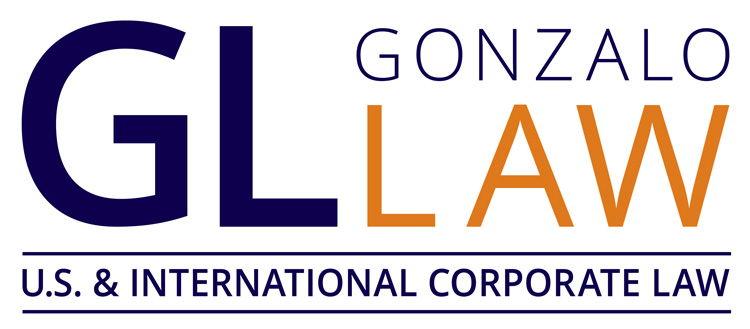Comprehensive due diligence is essential when preparing for the purchase or sale of a business. This due diligence will vary depending on whether you are on the buy or sell side of a purchase.
Each company is unique, from sector to size to valuation and business strategy. How can both parties plan for and execute these complex transactions? It begins with thorough research and discussions on both the seller and buy side of the transaction.
Seller Analysis
When selling a company, the sell side (the company being sold) needs to carefully consider various factors and undertake due diligence to ensure a smooth and successful transaction. Here are some sell-side considerations and due diligence activities typically involved in the process:
Preparation and Documentation: The sell side should ensure that all corporate records, financial statements, contracts, intellectual property documentation, permits, and licenses are properly organized and up to date. This includes preparing a comprehensive offering memorandum or prospectus that provides detailed information about the company, its operations, financials, and growth prospects.
Financial Due Diligence: The sell side should conduct a thorough financial analysis to identify any potential issues and ensure accurate financial reporting. This involves reviewing financial statements, tax returns, audits, and other financial records. It is essential to ensure that the financial information is reliable and transparent for potential buyers.
Legal Due Diligence: The sell side should engage legal counsel to review contracts, leases, agreements, and any pending litigation or legal matters. This helps identify any legal risks or issues that may impact the sale process. It is important to disclose any material legal matters to potential buyers to maintain transparency.
Operational Due Diligence: The sell side should assess the operational aspects of the company, including its production processes, supply chain, technology infrastructure, and human resources. This evaluation helps identify any operational challenges, potential synergies, or areas for improvement that may impact the valuation or attractiveness of the company to buyers.
Intellectual Property Due Diligence: If the company owns intellectual property (IP), such as patents, trademarks, copyrights, or trade secrets, it is crucial to conduct IP due diligence. This involves verifying the ownership, protection, and enforceability of the IP assets and assessing any potential infringement risks or pending litigation related to intellectual property.
Customer and Market Due Diligence: Understanding the customer base, market trends, competitive landscape, and growth opportunities is vital. The sell-side should provide a clear picture of its target market, customer relationships, sales pipeline, and marketing strategies. This information helps potential buyers evaluate the company’s market position and growth potential.
Regulatory and Compliance Due Diligence: The sell side should assess compliance with applicable laws, regulations, and industry standards. This includes reviewing permits, licenses, environmental compliance, data privacy, and any regulatory issues specific to the industry. Identifying and addressing compliance gaps or risks early in the process is important to mitigate potential deal complications.
Management Team and Employee Due Diligence: Buyers often assess the capabilities and stability of the management team and key employees. The sell-side should provide information about the management team’s qualifications, employment agreements, and any employee-related issues or contracts. It is crucial to address key employee retention and transition plans to reassure potential buyers.
Tax Due Diligence: Engaging tax professionals to review the company’s tax compliance, obligations, and potential exposures is essential. This includes analyzing tax returns, deferred tax liabilities, transfer pricing, and any tax planning strategies. Understanding the tax implications of the sale structure and addressing potential tax risks is crucial for both the sell side and potential buyers.
Environmental and Social Due Diligence: Depending on the industry and location, environmental and social due diligence may be necessary. This involves evaluating the company’s environmental impact, compliance with environmental regulations, social responsibility practices, and potential risks associated with environmental liabilities or social controversies.
Conducting thorough due diligence helps the sell side identify and address potential issues or concerns that may arise during the sale process. It allows the company to present itself in the best possible light to potential buyers and increases the chances of achieving a successful transaction. Working closely with experienced advisors, such as legal counsel, accountants, and industry experts, is crucial to navigating the due
Buy Side Analysis
When buying a company, the buyer side (the acquiring party) needs to undertake thorough due diligence and consider several factors to ensure a successful acquisition. Here are some buyer-side considerations and due diligence activities typically involved in the process:
Strategic Fit and Objectives: The buyer should assess the strategic fit of the target company with its existing operations, long-term goals, and growth plans. This involves evaluating how the acquisition aligns with the buyer’s business model, market expansion strategies, product portfolio, or customer base.
Financial Due Diligence: Conducting financial due diligence is crucial to assess the target company’s financial health, performance, and potential risks. This involves analyzing financial statements, tax returns, audits, cash flow, revenue recognition practices, debt obligations, and any contingent liabilities. The buyer should verify the accuracy of financial information provided by the seller and identify any potential deal breakers or valuation considerations.
Legal Due Diligence: Engaging legal counsel is essential to review the target company’s legal documents, contracts, permits, licenses, litigation history, and compliance with applicable laws and regulations. This helps identify any legal risks, pending legal matters, or contractual issues that may impact the acquisition. It is important to ensure that the target company has clear ownership of its assets and that there are no undisclosed liabilities or disputes.
Operational Due Diligence: The buyer should assess the operational aspects of the target company, including its production processes, supply chain, technology infrastructure, and human resources. This evaluation helps identify any operational challenges, potential synergies, or areas for improvement. The buyer should also assess the target company’s key employees and management team to ensure a smooth transition and retention of critical talent.
Market and Competitive Analysis: Understanding the target company’s market position, industry trends, competitive landscape, and growth potential is essential. The buyer should assess market dynamics, customer relationships, sales channels, marketing strategies, and any unique value propositions of the target company. This analysis helps determine the target company’s competitive advantage and growth opportunities.
Intellectual Property Due Diligence: If the target company owns the intellectual property (IP), such as patents, trademarks, copyrights, or trade secrets, the buyer should conduct IP due diligence. This involves verifying the ownership, protection, and enforceability of the IP assets and assessing any potential infringement risks or pending litigation related to intellectual property.
Customer and Supplier Due Diligence: Understanding the target company’s customer base, key customer relationships, contract terms, and supplier relationships is crucial. The buyer should evaluate customer concentration, customer retention rates, and the target company’s reputation in the market. Additionally, assessing supplier relationships, contract terms, and potential risks or dependencies on specific suppliers is important.
Regulatory and Compliance Due Diligence: The buyer should assess the target company’s compliance with relevant laws, regulations, permits, licenses, and industry standards. This includes analyzing environmental compliance, data privacy practices, safety regulations, and any regulatory risks associated with the target company’s operations. Addressing compliance gaps or potential risks is crucial to avoid legal and financial liabilities.
Synergy Analysis and Integration Planning: The buyer should evaluate potential synergies and integration challenges resulting from the acquisition. This includes identifying cost-saving opportunities, revenue synergies, operational efficiencies, and potential cultural or organizational integration issues. Developing a comprehensive integration plan helps facilitate a smooth transition and maximize the value of the acquisition.
Financial Modeling and Valuation: Based on the findings from due diligence, the buyer should perform financial modeling and valuation analysis to determine the appropriate purchase price and negotiate the deal terms. This includes assessing the target company’s financial projections, conducting scenario analysis, and evaluating the return on investment (ROI) and potential risks associated with the acquisition.
Preparing for Negotiations

As the contracting parties prepare, they enter into a non-disclosure agreement and review the company structure, business activities, and related documentation. Sellers must communicate the value of their business to potential buyers to ensure that the buyer is fully informed.
Before entering negotiations, potential buyers should:
- Research competitors, business capital, and the company’s reputation.
- Discuss financing options with advisors.
- Determine their preferred transaction type (stock sale or asset sale).
The sell-side due diligence involves organizing licenses, permits, leases, company records, and financial reports.
Intellectual Property and Due Diligence Measures
Buyers should review all trademarks, patents, and copyright registration documents. Other due diligence measures include:
- Reviewing records to identify transfer restrictions.
- Conducting a title search on the property.
- Reviewing vendor, supplier, and third-party contracts.
- Evaluating current management and human capital.
- Reviewing HR policies and employment contracts.
- Checking for environmental concerns regarding the property.
- Ensuring compliance with federal and state regulatory requirements.
- Reviewing tax records from the past three to five years.
Determining Valuation of the Business
The parties then determine the market value of the business by identifying revenue and assets (both tangible, such as inventory, and intangible, such as the company’s reputation). They may investigate recent sale prices of similar businesses or have a third party perform a formal valuation.
Identifying Potential Liabilities
Buyers must review potential liabilities that the seller owes to another party, including:
- Bank loans
- Mortgages
- Expenses
The buyer will be responsible for these debts after closing.
Agreeing on Purchase Price
The parties then discuss the purchase price and payment terms. Buyers can pay cash or finance the purchase of the company. Financing options and arrangements may include the following:
- Seller financing
- Investor financing
- Deferred payments
- Working capital adjustments
- A combination of these sources.
Types of Transactions for the Purchase or Sale of a Business
Early in the negotiation process, parties should discuss the type of sale they want to do. This will be decided before drafting the purchase agreement and closing on the sale. Once the parties decide the type of sale they will do, this affects how the buyer will acquire the business. The most common is either a stock sale, asset sale, or a hybrid of the two.
Stock Sales
In a stock sale, the buyer purchases company shares and acquires equity. The buyer also assumes the liabilities of the seller, meaning the seller avoids future liability. The seller can transfer certain contracts through a stock sale without third-party consent.
Asset Sales
An asset acquisition entails the seller transferring the title of all assets to the buyer, which is more document intensive. This requires bills of sale, contract assignments, and deeds to certify a smooth transition. Asset sales often require third-party consent for contract transfers.
Hybrid: Asset Stock Sale
A hybrid asset and stock sale refers to a transaction in which both the assets and the stock of a company are sold simultaneously. This type of sale is often used in the context of mergers and acquisitions (M&A) when a buyer acquires a target company.
In a typical stock sale, the buyer purchases the shares of the target company directly from the shareholders, thereby acquiring the entire company along with all its assets and liabilities. On the other hand, in an asset sale, the buyer acquires specific assets and liabilities of the target company, but not the company itself.
A hybrid asset and stock sale combine elements of both types of transactions. In this scenario, the buyer purchases both the stock of the company, thereby acquiring ownership and control of the company, and specific assets and liabilities of the target company. The buyer has the flexibility to choose which assets and liabilities they wish to acquire, while also gaining the benefits of acquiring the company as a whole.
The structure of a hybrid sale can be complex and is often influenced by various factors, including legal, tax, and accounting considerations. It may involve separate agreements for the stock purchase and the asset purchase, and careful attention must be given to the allocation of the purchase price and potential tax implications for both the buyer and the seller.
Hybrid asset and stock sales can provide certain advantages to both the buyer and the seller, depending on their specific objectives and circumstances. For the buyer, it allows for a more tailored acquisition by selecting specific assets and liabilities while also gaining control of the company. For the seller, it may offer tax advantages or the ability to retain certain assets or liabilities that are not desired by the buyer.
It is important to note that the specifics of a hybrid asset and stock sale can vary depending on the jurisdiction and the terms negotiated between the parties involved. Consulting with legal, tax, and financial professionals is crucial to properly structure and execute such transactions.
Key Legal Documents
The sale of a company involves various legal documents that are necessary to document the terms and conditions of the transaction and provide legal protection for the parties involved. While the specific documents may vary depending on the nature of the sale and the jurisdiction, here are some common legal documents typically involved in the sale of a company:
Letter of Intent (LOI) or Term Sheet: This document outlines the preliminary terms and conditions of the proposed transaction. It sets forth the key provisions, such as purchase price, payment terms, the structure of the deal, exclusivity period, due diligence period, and confidentiality obligations. The LOI serves as the basis for negotiation and further documentation.
Stock Purchase Agreement (SPA) or Asset Purchase Agreement (APA): The SPA or APA is the central document that governs the sale transaction. It outlines the specific terms and conditions of the sale, including the assets or stock being sold, purchase price, payment terms, representations and warranties, covenants, indemnification provisions, closing conditions, and dispute resolution mechanisms. The SPA is tailored to either a stock sale (if shares are being sold) or an APA (if specific assets are being sold).
Disclosure Schedules: These are attachments to the SPA or APA that provide detailed disclosures about the company’s operations, financials, contracts, litigation, intellectual property, and any other relevant matters. The sell-side provides these schedules to disclose material information to the buyer, limiting its liability for any undisclosed information.
Non-Disclosure Agreement (NDA): An NDA is a confidentiality agreement signed between the parties involved in the transaction. It establishes obligations and restrictions on the use and disclosure of confidential information exchanged during the due diligence process and negotiations. The NDA ensures that sensitive information remains confidential and protected.
Employment Agreements: If key employees or management will continue with the company post-sale, employment agreements may be required to outline their roles, responsibilities, compensation, benefits, and other terms of employment. These agreements provide clarity and protection for both the employees and the buyer.
Non-Compete Agreement: A non-compete agreement restricts the seller from engaging in a similar business or competing with the buyer for a specified period of time and within a defined geographic area. It protects the buyer’s interests by preventing the seller from using their knowledge or relationships to start a competing venture.
Transition Services Agreement (TSA): In some cases, a TSA may be necessary if the buyer requires certain transitional support from the seller after the sale. The TSA outlines the terms and conditions under which the seller provides temporary services, such as IT support, customer support, or back-office functions, to facilitate the transition of operations to the buyer.
Consents and Approvals: Depending on the nature of the business and the terms of existing contracts, consents and approvals from third parties may be required. This could include obtaining consent from lenders, landlords, key customers, or regulatory authorities for the assignment of contracts, lease agreements, or licenses to the buyer.
Escrow Agreement: An escrow agreement may be established to hold a portion of the purchase price in escrow for a specified period. This serves as security for any indemnification claims or post-closing adjustments. The terms of the escrow, including the release conditions, are typically documented in a separate agreement.
Closing Documents: These include various documents required to finalize the transaction, such as closing certificates, resolutions or consents from the company’s board of directors or shareholders, bills of sale, stock certificates, or other transfer documents. These documents evidence the completion of the transaction and the transfer of ownership to the buyer.
The Definitive Purchase Agreement
Of all the documents that comprise the purchase or sale of a company, the purchase agreement is the principal document. After agreeing on the type of sale and before closing, the contracting parties outline the conditions and requirements in a purchase agreement. The seller provides warranties and terms for the deal. The buyer must verify funds and prove they can complete the transaction.
The purchase agreement is a legally binding document between the parties. Terms that may be incorporated into the purchase agreement:
- Asset allocation
- Ancillary agreements
- Non-compete agreements
- Employment agreements
For additional questions on this or any aspect of the purchase or sale of a business, contact our legal counsel at Gonzalo Law LLC at wwwgonzalolaw.com or via phone at 1-855-466-9256.
PRACTICE AREA CHAIR:
Regions Served:






